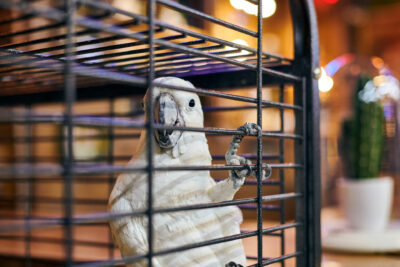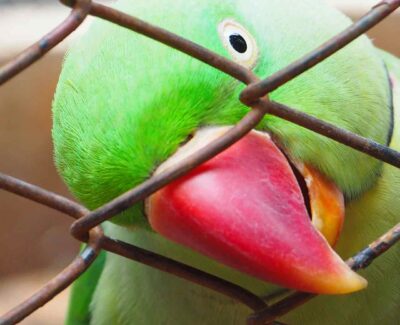
Socialization Tips to Help Your Bird Build Trust and Confidence
Whether you’re welcoming a new bird into your home or hoping to strengthen the bond with a longtime feathered friend, socialization plays a key role in helping your bird feel safe, secure, and connected. Some birds are naturally outgoing, while others may be shy or fearful—especially if they’ve had limited human interaction in the past.
No matter where your bird starts, the good news is that with patience, consistency, and positive reinforcement, you can help them build trust and become a more confident companion.
Start Slow and Respect Boundaries
When it comes to earning a bird’s trust, the best approach is to go at their pace. Never force interaction—especially with a bird that’s new to your home or shows signs of nervousness. Instead, spend time sitting near their cage, speaking softly, and allowing them to observe you from a distance. Look for early signs of curiosity or comfort, such as:
- Staying near the front of the cage
- Watching you with a relaxed posture
- Accepting treats through the bars
These small moments are the building blocks of trust.
Use Positive Reinforcement
Birds respond best to positive reinforcement—rewarding desired behaviors rather than punishing undesired ones. Use a favorite treat (such as millet, sunflower seeds, or small pieces of fruit) to encourage your bird to engage with you. For example:
- Offer a treat when they step toward your hand
- Reward calm behavior near you or during training
- Pair gentle talking or whistling with treats to create positive associations
Over time, your bird will begin to see you as a source of safety and fun.
Practice Target Training
Target training is a simple, effective way to build communication and confidence. Start by teaching your bird to touch a small object (like a chopstick or pencil eraser) with their beak in exchange for a treat. Once your bird masters this skill, you can use it to guide them around their space, encourage step-ups, or redirect focus during stressful situations. Training sessions should be short (5–10 minutes), upbeat, and end on a positive note.
Offer Safe Out-of-Cage Time
Supervised time outside the cage is essential for both physical and emotional enrichment. Start with a bird-safe area and allow your bird to come out on their own terms. Use treats or toys to make the space fun and inviting, and never chase or grab your bird to force them back inside.
As your bird grows more confident, you can encourage them to explore new perches, toys, or even perch on your hand or shoulder.
Provide Daily Enrichment
A confident bird is a stimulated bird. Keep your bird mentally and physically engaged with:
- A rotating variety of toys (including shreddable, foraging, and puzzle toys)
- Opportunities to climb, swing, and explore
- New sounds and experiences—like music, nature sounds, or talking
Introducing enrichment gradually helps your bird adapt to change and encourages curiosity.
Respect Individual Personality
Not every bird will become a cuddler or talker—and that’s okay! Socialization is about helping your bird feel safe, empowered, and connected, rather than forcing them into human expectations. Celebrate small wins and respect your bird’s unique temperament.
If your bird is fearful or reactive, it doesn’t mean that they’re unfriendly—it just means they need more time and gentle consistency.
Be Consistent and Patient
Trust-building doesn’t happen overnight. Some birds may warm up in days, while it may take several months for others. What matters most is consistency: spend time together every day, speak calmly, avoid sudden movements, and use the same training cues to build familiarity. This will help teach your bird that you are a reliable, positive presence—which creates the foundation for a lasting bond.
Socializing your bird is a journey, not a destination. As your feathered friend gains confidence and trust, you will enjoy the rewards of a deeper relationship built on mutual respect and understanding. With time, patience, and positive reinforcement, even the shyest bird can become a joyful, engaged companion.
Looking for more behavior tips or species-specific guidance? Check out our bird fact sheets, follow our blog, or join our active and engaged community on Facebook!





